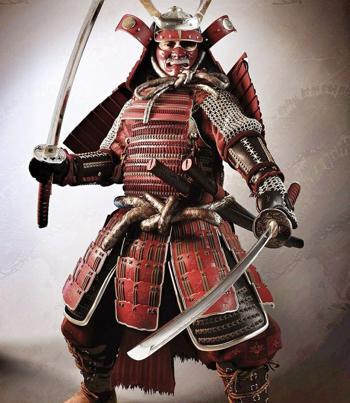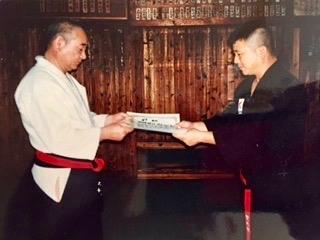Sitemap
History of Jujutsu?
The exact origins of Jujutsu are still being determined because much of the history was passed down by oral teachings; elements of the art can be traced back over 2500 years. Mythical stories of two legendary Gods, Kajima and Kadori, punished the inhabitants of an eastern province for their lawlessness using Jujutsu techniques.
Chikura Kurabe, a wrestling sport that appeared in Japan in 230 BC, had many techniques that were incorporated into Jujutsu training. During the Heian Period (784 AD), Jujutsu was integrated into the Samurai Warrior’s training to defend himself against an armed attacker if he lost his sword. In 880 AD Prince Teijun formed the first Jujutsu “Ryu” or school.
During the Edo Period (1603-1868), Japan became a more peaceful area under the Tokugawa military government. Weaponless styles began to replace the weapon forms of old. During the Edo Period, it is believed that more than 700 systems of Jujutsu existed.
During the Meiji Restoration, the power of Japan shifted from the Shogun back to the Emperor. Since the Samurai had supported the Shogun, an Imperial Edit was set forth, making it a crime to practice the martial arts of the Samurai. Many practitioners became bone setters, as they were well practiced from the injuries sustained in the dojo. Unfortunately, many more used their skills to put on fake wrestling shows for public amusement or became gangsters. Some masters took the art “underground” or practiced in another country until the ban was lifted in the mid-twentieth century.
Jujutsu is the father of some relatively new martial arts. In 1882, Jigaro Kano developed the art of Judo using Jujutsu as the model. In the 1920s, Ueshiba Morihei developed Aikido derived from Jujutsu techniques: rolls, falls, and circular movements. In modern times, pure classical Jujutsu is not widely practiced in contrast to the multitude of sports-style martial arts systems. Although it is more commonly taught to police and special operation military forces, there are few opportunities for the general populace to learn this ancient warfare fighting art in its original form.

In 1532 AD Takenouche Hisamori founded one of the first Ryu that used Jujutsu as original art. Legend has it that while on a pilgrimage, Takenouche collapsed from exhaustion after training and meditating for several days. In his delirium, he received a vision from a phantom warrior. The warrior taught him five techniques of immobilization and the advantages of using short weapons over long ones.
Before the foundation of the Takenouche-Ryu, open-handed combat techniques existed solely as an inferior art to a major weapons system. Most modern Jujutsu Ryu can trace their lineage directly back to Takenouche. In the early 16th century, Hideyoshi Toyotomi introduced the Chinese Art of Ch-an Fa (punching and nerve striking) to Japan, and Jujutsu adopted it.
The Art of JTR Jujutsu...
JTR Jujutsu International History
The JTR Jujutsu style concentrates on traditional Japanese “old style” techniques that have evolved over generations. This unique style is a combative, a combative style in contrast to its precursor form, a softer and more traditional style. Martial arts techniques have been adopted for practical self-defense applications, which both military and law enforcement programs have used. This style includes primarily stand-up, close-quarters strikes, low kicks, joint locks, throws, chokes, and weapons. Ground fighting and grappling are performed on a limited basis in contrast to the principal focus of Brazilian Jujitsu. JTR Jujutsu International operates training programs in Washington, DC, and Southern Maryland. Alum members are spread throughout the globe, with representatives from over 20 different countries.
JTR (Jigo-Tensin Ryu) Jujutsu is a combative style of Japanese Jujutsu renamed by Grand Master Dong Jin Kim (1957-2015). Some of the precursor Jujutsu systems included Jigo Tenshin Ryu, renamed by the 9th Soke, Shorin Fujiwara Michikazu is still practiced in Fukuoka, Japan. In its early years, the Fukuoka school of Jujutsu was taught exclusively to retainers of the Kuroda noble family in Fukuoka (in Fukuoka-ken, Hakata-shi) — where the Honbu dojo (Seibukan) remains, and where Grand Master Dong Jin Kim received his Grand Mastership title. An earlier system and original name of our lineage was Ise Jitoku Tenshin Ryu and was founded in the early 19th Century by Fujita Chosuke Fumoto Norisada — who himself had studied under two other jujutsu schools, the Kashara line of the Ryoi Shinto Ryu and the Yoshin Ryu. Norisada died in 1839.

Grand Master Dong Jin Kim (17th Soke) is standing with his teacher Mifune Toichiro (16th Soke), in front of Honbu Dojo (Seibukan) in Fukuoka-Ken Hakata-shi, Japan. Following a Japanese tradition, a scroll is passed down (known as a “Densho”) from teacher to student in a historical ceremonial fashion. The scroll contains esoteric messages to hide the essence of the authentic style and acts to convey authority for teaching. The soke instructor who leads the school must develop a unique system, transcending the original form by refining the old and creating anew from the principles and science of Jujutsu. Grand Master Kim was the only Korean to receive the Dragon-Tiger scroll, breaking some Japanese cultural traditions and norms.
Our Martial Ancestors:
Yoshin Ryu
Founder:
Akiyama ShirobeiYoshitoki
Kasahara Ryu
Founder:
Kasahara SaburoEmonYukichika
Ryoi Shinto Ryu
Founder:
Shiro Zaemon the Second
The merger of these schools established our own:
Isei Jitoku Tenshin Ryu
Founder:
Fujita Chosuke Fumoto Norisada
Jigo Tenshin Ryu
Founder:
Shorin Fujiwara Michikazu
15th Grandmaster:
Yokota MasamuneKiyoyoshi
Isei Jitoku Tenshin School
16th Grandmaster:
Mifune Toichiro Shobukan
Jigo Tenshin School
17th Grandmaster:
Dong Jin Kim
JTR Jujutsu International
Address
4429 Wisconsin Ave , NW Washington DC 20016
Telephone
+1 (202) 203-8056
Jtrjujutsu@gmail.com
We're waiting to hear from you
For general inquiries, please fill out this contact form below and we’ll respond to you as soon as possible. Thanks again!
